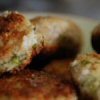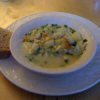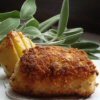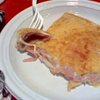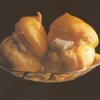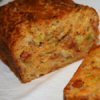40 mins
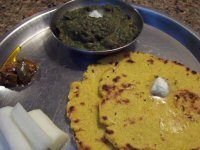
Maaki ki Roti (Corn Roti)
Ingredients for Maaki ki Roti (Corn Roti)
If you want to know more about Indian ingredients, check our Indian Spices and our Indian Pulses, Rice and Seeds pages.
Currently displaying quantities in US Imperial Measurements
How to Cook Maaki ki Roti (Corn Roti)
- Place the cornmeal and grated radish (or onions or coriander leaves) in a bowl and add enough hot water to make a stiff dough. Mix with a wooden spoon until it is cool enough to be kneaded by hand. Knead for a few minutes and add a little more hot water if required.
- Divide into 8-10 portions and roll out each one, one at a time, into circles about 6" (15cm) diameter and about one-eighth inch (3mm) thick. Expert cooks will press the dough between their palms. You may find it better to roll the dough between two layers of plastic (like a split Ziplock freezer bag].
- Brush a skillet or griddle with peanut oil and cook each roti over a medium heat for a few minutes on each side. Top with a nut of butter and serve hot with Sarson Ka Saag.
 MAMTHA SUNIL KUMAR'S HOT TIP:
MAMTHA SUNIL KUMAR'S HOT TIP:
For a perfect Punjabi classic meal, serve Maaki ki Roti topped with butter (or ghee), alongside a warm bowl of Sarson Ka Saag and a large glass of buttermilk.
What To Eat Tonight

Christmas is that special time of year when diets go out of the window and folks spend more time preparing beautiful meals.

What should I make him for Father's Day? Why not spoil him with one of our specially chosen Father's Day recipes? Go ahead - make his day!

Those wonderful beasts that just scream for something hot and tasty between toasted bread or buns. Once tasted, never forgotten!
Other Pasta Recipes

Zesty Pasta Salad is a low-fat, zesty salad that is perfect for a light summer lunch. You can use other options to vary it with your own ingredients

Pasta Jumble is an unusual way of serving pasta. It looks very professional but is, as you will see, quite simple.
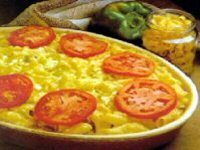
Macaroni Cheese is definitely one of my favourites and is really very easy to make. No need to serve anything with it... just on its own is fine!
 Maki Sushi
Maki Sushi 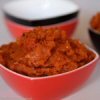 Mango Chutney (Mango Pickle)
Mango Chutney (Mango Pickle) 
